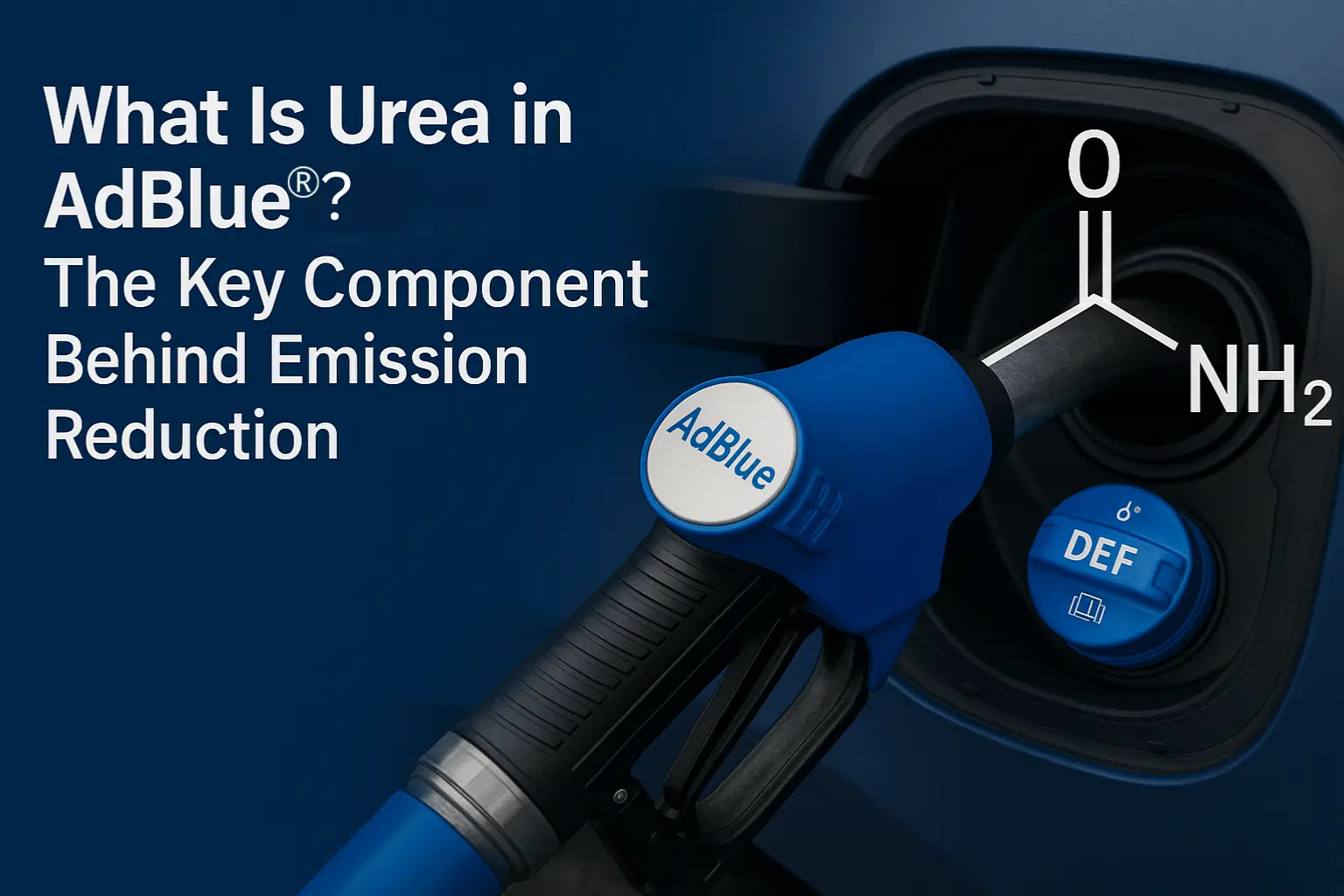What Is Urea in AdBlue? The Key Component Behind Emission Reduction
At Atmosfer Engineering, we are proud to be a part of the technological transition toward cleaner and more sustainable transportation. A critical element in reducing emissions from diesel engines is AdBlue, a solution made primarily from urea. In this article, we will explore what urea is, how it functions in AdBlue, and why its purity and compliance with ARLA 32 standards are crucial for achieving real environmental benefits.
Whether you’re a fleet manager, an industrial buyer, or simply someone curious about the mechanics behind emission control technologies, this comprehensive guide will clarify how urea in AdBlue plays a pivotal role in reducing harmful NOx emissions and how Atmosfer Engineering supports this process with high-purity supply systems.
What Is Urea and How Is It Used in AdBlue?
Urea (chemical formula: CO(NH₂)₂) is a nitrogen-based compound widely used in fertilizers, plastics, and—most importantly for this context—emission reduction fluids. In AdBlue, which is also known globally as Diesel Exhaust Fluid (DEF), urea is mixed with deionized water to form a 32.5% urea solution. This mixture is non-toxic, colorless, and safe to handle, yet it serves a powerful purpose in modern diesel vehicles.
AdBlue is stored in a dedicated tank within the vehicle. When injected into the exhaust system, it undergoes a thermal reaction, releasing ammonia (NH₃). This ammonia then reacts with Nitrogen Oxide (NOx) gases within the Selective Catalytic Reduction (SCR) system, converting them into harmless nitrogen (N₂) and water vapor (H₂O).
This is where urea comes into the picture: it’s the active compound that triggers the breakdown of toxic gases.
How Urea Helps Reduce NOx Emissions in Diesel Engines
Modern diesel engines are required to meet strict emission standards, such as Euro VI in Europe and EPA 2010 in the U.S. These regulations target the drastic reduction of NOx emissions, which are responsible for smog formation and respiratory problems.
Here’s how urea works in AdBlue systems to meet those regulations:
- Injection Phase
AdBlue is precisely injected into the hot exhaust stream after combustion. - Hydrolysis
Urea decomposes into ammonia (NH₃) and carbon dioxide (CO₂) under high heat. - Selective Catalytic Reduction (SCR)
Ammonia reacts with NOx in the SCR catalyst, producing nitrogen and water.
This entire chemical process is incredibly efficient, capable of reducing NOx emissions by up to 90%. However, its effectiveness depends heavily on the purity of the urea used.
Importance of ARLA 32 Compliance in Urea Production
Not all urea is suitable for AdBlue production. The AdBlue solution must meet strict ISO 22241 standards for purity and composition. One key certification is ARLA 32 (Agente Redutor Líquido de Óxidos de Nitrogênio Automotivo), commonly used in Latin America and increasingly recognized in international supply chains.
At Atmosfer Engineering, we ensure that our urea complies with ARLA 32 standards. Why is this important?
- High-purity urea prevents the buildup of residues in the SCR system.
- Impurities like biuret or calcium can damage injectors and catalysts.
- Deionized water must also meet conductivity thresholds to maintain the integrity of the solution.
Failing to comply with ARLA 32 or ISO 22241 standards can lead to:
- Costly vehicle repairs
- Increased emissions
- Reduced fuel efficiency
- Warranty voidance
Our focus on certified and laboratory-tested urea protects both your equipment and the environment.
High-Purity Urea Supply with Atmosfer Makina Systems
At Atmosfer Engineering, we don’t just sell a machine—we provide integrated emission control solutions. Our AdBlue production plants are designed to ensure consistent quality, safe storage, and optimal dosing.
Why Choose Atmosfer Makina?
- Advanced Mixing Systems
We offer fully automated AdBlue preparation units for commercial and industrial facilities. - Bulk Storage Solutions
Custom-designed tanks, pumps, and dispensers tailored for your fleet needs. - Laboratory-Grade Testing
In-house testing equipment ensures that every batch of urea meets ARLA 32 and ISO 22241 standards. - Logistics and Distribution
National delivery service with temperature-controlled packaging to preserve product integrity.
We invite you to explore our full range of solutions at www.atmosfermakina.com. Whether you’re producing AdBlue in-house or sourcing it for your fleet, we’re here to support your mission for cleaner, greener transport.
Frequently Asked Questions (FAQ)
- What is the role of urea in AdBlue?
Urea serves as the active ingredient that converts NOx emissions into harmless nitrogen and water vapor through the SCR system. - Is AdBlue harmful to humans or the environment?
No, AdBlue is non-toxic and biodegradable when handled properly. - What percentage of urea is in AdBlue?
AdBlue contains 32.5% high-purity urea and 67.5% deionized water. - Can I use fertilizer-grade urea for AdBlue production?
Absolutely not. Only ARLA 32-certified or ISO 22241-compliant urea is safe and effective. - What happens if I use contaminated urea?
Impurities can clog injectors, damage the catalyst, and void your vehicle’s warranty. - Does AdBlue improve fuel efficiency?
Indirectly yes. A well-functioning SCR system reduces engine strain and can lead to better fuel economy. - How should AdBlue be stored?
In a cool, dry place away from direct sunlight and not below -11°C or above 30°C. - Can I produce AdBlue on-site?
Yes. Atmosfer Makina provides production units for on-site manufacturing under full compliance. - What is ARLA 32 and how is it different from ISO 22241?
ARLA 32 is the Brazilian regulation aligned with ISO 22241 but emphasized in Latin markets. - Do all diesel vehicles require AdBlue?
Only those equipped with SCR systems, typically Euro V and newer diesel engines. - Can AdBlue freeze?
Yes, it freezes at around -11°C but can be thawed without degradation. - How long does AdBlue last in storage?
Typically 12-36 months if stored properly.
For more technical details, system configurations, or urea sourcing inquiries, please visit our website:
👉 https://atmosfermakina.com/
Or contact us directly via:
📞 0530 200 2435
📧 [email protected]

